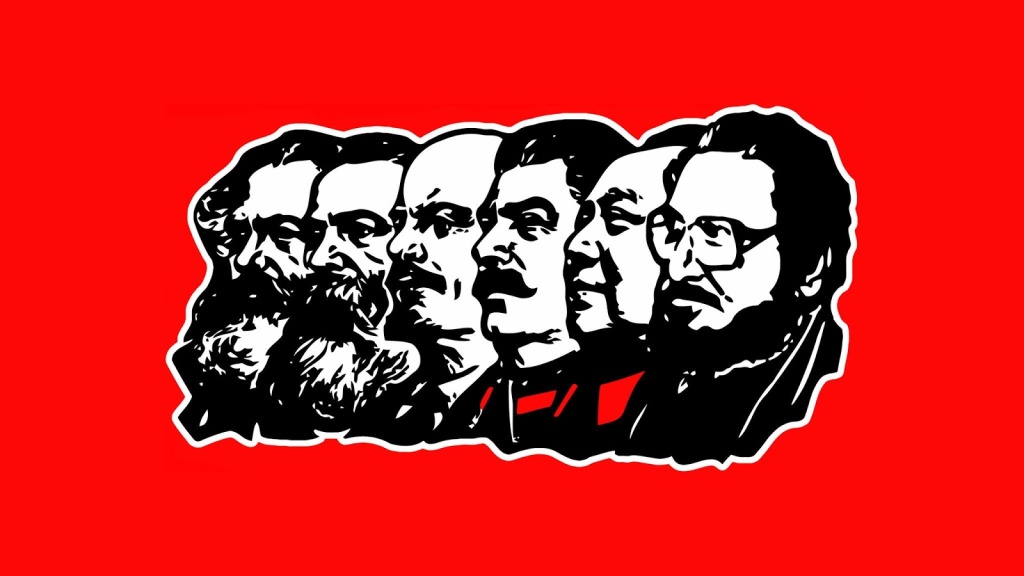It is extremely strange to go from remembering its passing to celebrating its founding in four days, but that’s alright. What’s really important is that on December 30th, 1922, the Russian Soviet Federative Socialist Republic (Russian SFSR), Transcaucasian SFSR, Ukrainian Soviet Socialist Republic (Ukrainian SSR), and Byelorussian SSR joined together to form the Union of Soviet Socialist Republics, the USSR. This was the first long-lasting socialist state in history, and the millions of workers and peasants in this mighty land worked tirelessly with their communist leadership, the All-Union Communist Party (Bolsheviks) (AUCP(B)), to construct and defend this new type of society. We have explained what happened with the USSR since then in various articles before; a lot of progress was made, but reactionism was obviously never eliminated.
There is not much need to explain all of what happened with the USSR, or to even summarize much of it; we will share our own articles talking about it at the end. Instead, let us commemorate the passing of 100 years since the USSR’s founding. 100 years have gone by, and 100 years of revolutionary experience has accumulated over that time. Obviously, proletarian revolutionary experience could be dated to the Bolshevik Revolution in 1917, the Paris Commune in 1871, the founding of the Communist League in 1847, and so on, but the USSR was the first socialist state to last a long time, and that’s what makes it so special. It showed to the people of the world that they did not have to slave away for capitalist-imperialism; another world was possible, one in which the working people were masters of production, and by extension masters of their society. Not only did it show that socialism could be long-lasting and successful, but it proved Marx’s theories basically correct, for it showed that the intense contradictions of Tsarist Russian society inevitably led to revolution and the imposition of socialism. True, it did contradict Marx’s idea that the most industrialized capitalist states would have the first revolutions, but that does not discredit either Marx or the experiences of the USSR.
Most importantly for us, the USSR—having no “blueprints” to go off of when its mode of production developed—taught working people worldwide what not to do when they hold political power. Mistakes were unavoidable in this period, and any and all crimes the state committed—though not necessarily justified or even the fault of proletarian leaders—were also unavoidable because of the systemic flaws in the USSR. We have mentioned many times before that the USSR experienced capitalist restoration in the 1950’s; the issues with socialism in the USSR were what allowed that to happen. The dissolution of the USSR was linked to that capitalist restoration, which was linked to the mistakes made in the socialist period. Understanding the mistakes in the theories and practices of the USSR, genuinely and ruthlessly criticizing them while still recognizing it as a proletarian state worthy of our defense, is what makes us scientific socialists.
It is unfortunate that the USSR has not been with us for 31 years, and it is also unfortunate that it experienced capitalist restoration before that, but from these 100 years of theory and practice from the USSR and many more years from other countries, we have all we need to create a new USSR and new socialist states all around the world. The red flag will fly once again in Moscow, as it will fly in the successor state to “Washington D.C.”, and as it currently flies in the liberated areas in India, the Philippines, Turkey, and Peru!
Articles mentioning the USSR’s history:
- Social Imperialism is not Socialism
- Socialist Relations of Production
- Against Revisionism, and Against Ultra-Leftism
- The Masterpiece of Anti-Communists; Animal Farm
- Debunked: “Communism Doesn’t Work!”
- Actually, Western Communists Can And Do Move To “Communist Countries”
- Did Communism Really Kill “100 Million People”?
- Let’s Talk About Democracy
- On the Molotov-Ribbentrop Pact, and on National “Socialism”
- On The Topic Of “Totalitarianism”
- Dictatorship In Name Only
- On the October Revolution
- Happy 144th Birthday to Comrade Stalin!
- Why Defend Previous Socialist Experiments and Revolutionary Movements?
- On the USSR’s Dissolution


Leave a comment